Customer Communication Management: Complete Guide for 2025
Master the strategy, tools, and best CCM practices.

Numerous digital channels offer brands plenty of opportunities to engage customers in various ways, while customer journey is full of moments that require streamlined and consistent communication. Such abundance creates a challenge: managing it all without ending with a chaotic, disconnected experience.
Customer communication management addresses this very challenge. In this guide, designed for business owners, marketing leaders, and customer support managers, we highlight the importance of CCM, clarify what it is (and isn’t), and explore the key trends shaping its future. Let’s start by defining CCM itself.
Table of contents:
What Is Customer Communication Management?
Customer Communication Management (CCM) is a strategy and a suite of digital tools for creating, managing, and delivering brand messages to customers across chosen channels.
According to MarketsandMarkets, the CCM market is experiencing rapid growth. Driven by digital transformation, the demand for bespoke omnichannel communication, and AI adoption, this sector is poised to surpass $5 billion by the early to mid-2030s.
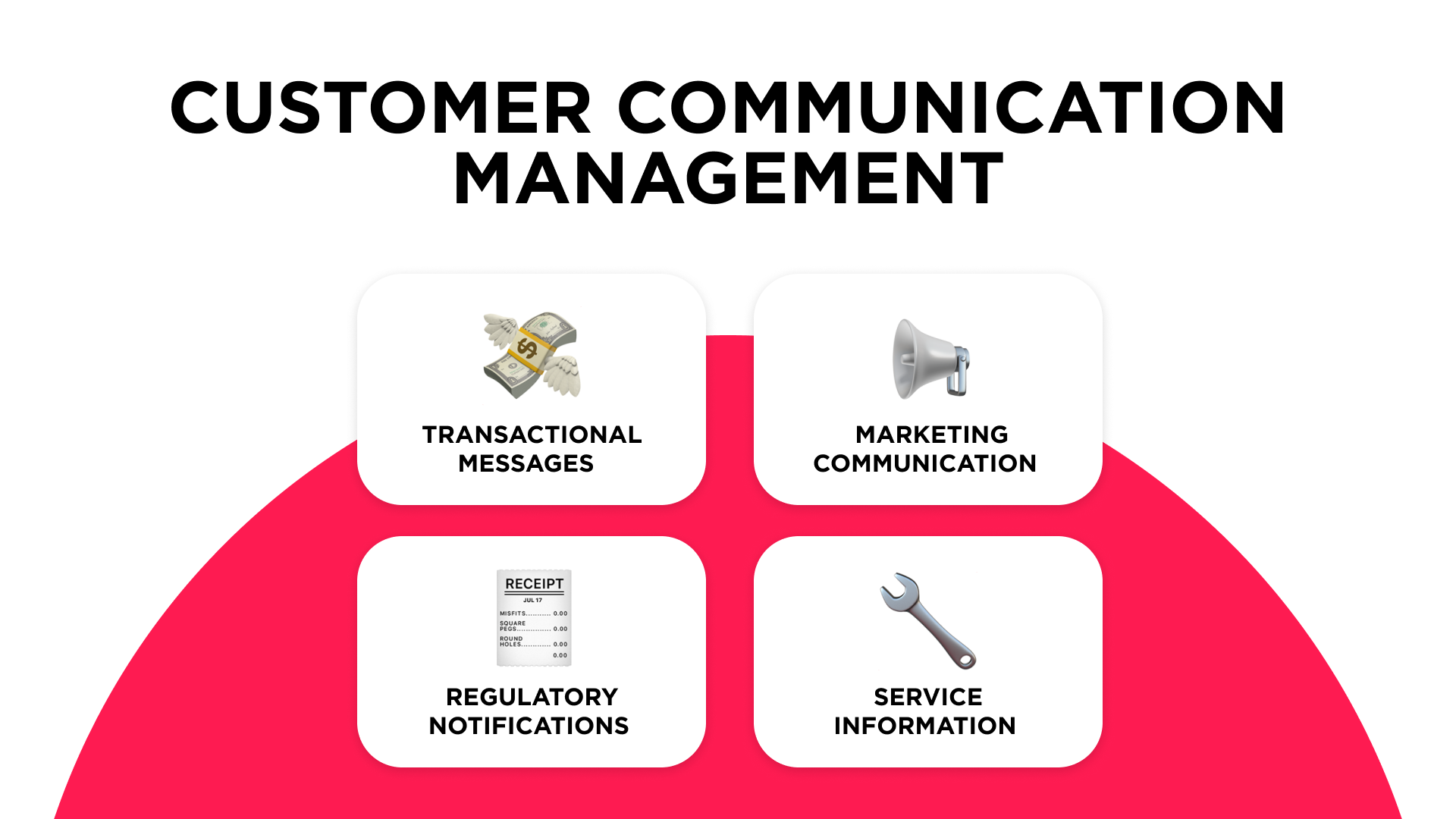
CCM covers all outbound communications, including transactional (invoices, statements, receipts, shipping notifications), regulatory (legal notices, changes to terms of service), marketing (personalized offers, newsletters), and service (appointment confirmations, responses to inquiries, order status updates) messages. Its primary goal is to ensure that every message (regardless of its type or delivery channel) is accurate, timely, relevant, and personalized to the individual recipient or a targeted audience segment.
While we will explore this in more detail later, it's important to clarify the difference between CCM, CRM, and CXM, as these three acronyms are often confused. In short: CRM (Customer Relationship Management) stores your customer data (the "Who"), CCM (Customer Communication Management) uses that data to send messages (the "What" and "How"), and CXM (Customer Experience Management) is the broad strategy that uses both to improve the entire customer journey.
Why CCM is a strategic priority for business
Implementing customer communications management is essential as it addresses critical challenges of modern businesses.
- Meeting customer expectations. Today’s customers expect brands to know their preferences and have marketing and support communications tailored to their tastes. CCM leverages customer data to achieve hyper-personalized communications that reflect purchase history, preferences, and even real-time behavior.
- Ensuring compliance and data security. Highly regulated industries such as finance, insurance, and healthcare require compliance with numerous laws (e.g., personal data protection regulations). CCM systems allow for secure delivery of confidential information, maintain audit-ready archives, and include mandatory legal disclaimers in every message.
- Maintaining a consistent brand voice. No customer would be glad to participate in communications where marketing says one thing, customer support another, and finance sends different bills or invoices. CCM centralizes messaging templates and content, ensuring tone, style, and branding remain consistent across all communication channels.
- Boosting operational efficiency and reducing costs. Automation of routine communications (invoices, notifications) and AI implementation free up staff resources for complex and creative tasks.
"For customers, an invoice, a policy update, or a simple notification isn't just a document — it's a direct reflection of a brand to them. Companies should make CCM a priority because consistent, personalized, and empathetic communication is the foundation of customer loyalty," notes Andrey Palagin, Head of Marketing at Umnico.
6 key features of a CCM system
To help businesses deliver seamless and personalized communication, CCM systems must combine flexibility, automation, and compliance.
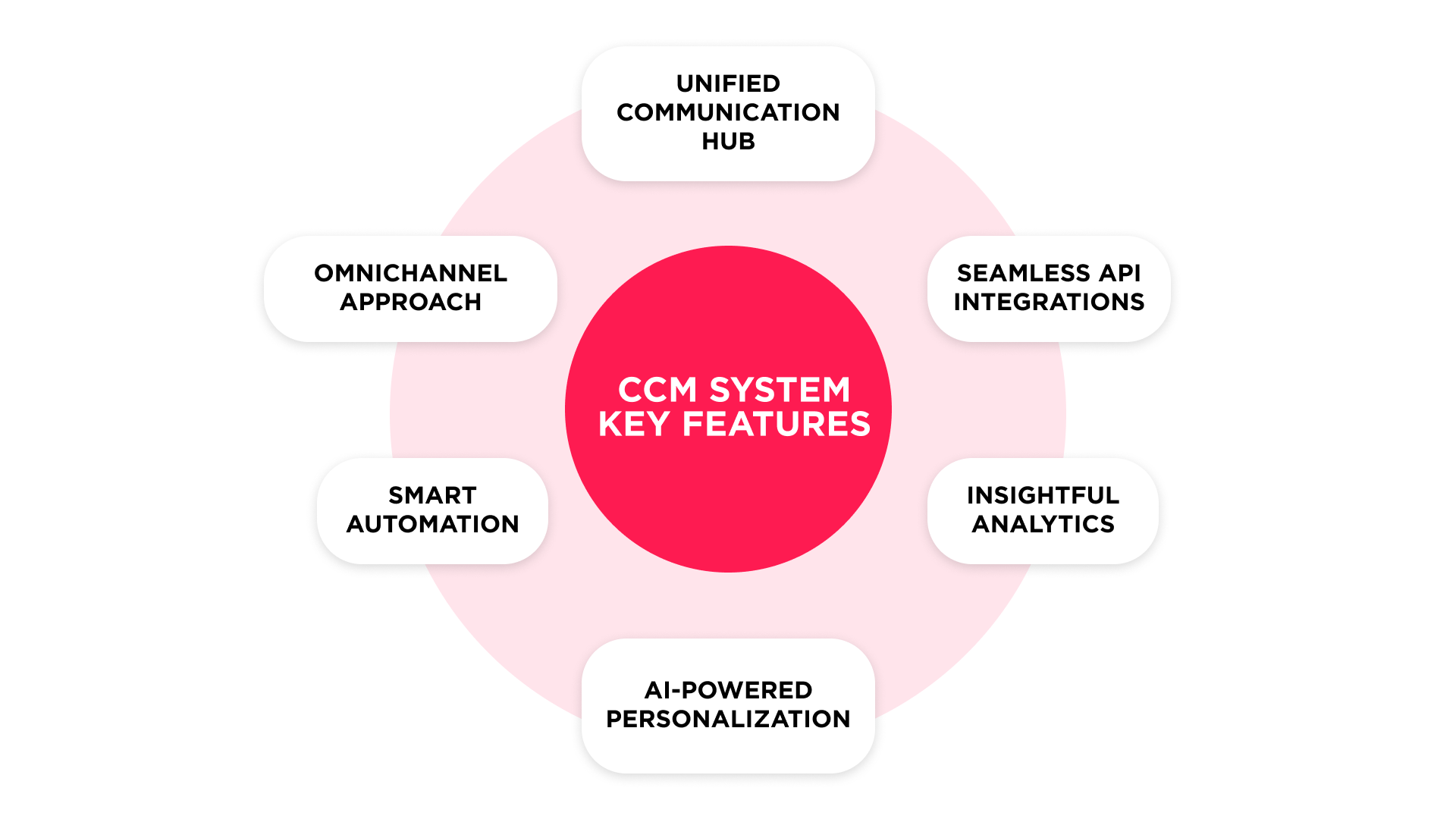
Centralized communication management
A unified hub where your team can create, store, and edit all communication assets, ensuring consistency.
AI-powered personalization
Deep integrations into CRM, ERP, and other business systems allow companies to achieve a customer communication management workflow that automatically extracts relevant data (such as names, order numbers, account balances, etc.) and provides communication tailored to a specific customer.
Omnichannel approach
“Customers constantly move from one channel to another—from online to offline and vice versa—and expect a seamless and consistent experience without a noticeable disconnect,” says Philip Kotler, also known as the “Father of Modern Marketing”.
It is essential for a brand to deliver content via the channels preferred by its target audience and be able to switch between email, SMS, push notifications, messaging apps, and social media effortlessly.
Smart automation
With trigger-based workflows, CCM systems can automatically send the right message at the right moment—whether it’s a cart abandonment reminder, registration confirmation, or a payment due alert.
Insightful analytics & dashboards
You can't improve what you don't measure. Dashboards that track delivery rates, opens, clicks, and other key metrics are essential for data-driven optimization.
Seamless API integrations
An efficient CCM system should be able to integrate with the company’s existing IT ecosystem. This ensures flexibility and scalability capable of accommodating the brand’s growth and expansion.
CCM vs. CRM vs. CXM
To avoid confusion, it is important to differentiate CCM from CRM and CXM.
CCM vs CRM. While CCM is the system to engage customers via various channels, Customer relationship management (CRM) is the system of record, which stores knowledge, such as customer data and history of interactions.
CCM vs CXM. Customer Experience Management (CXM) orchestrates the end-to-end customer journey — what touchpoints exist and how they should feel. CCM executes the communications within those those touchpoints, turning journey logic into communication messages.
| CCM | CRM | CXM | |
|---|---|---|---|
| Focus | Creating and delivering personalized communications | Managing and analyzing customer data | Designing and improving customer experience |
| Functions | Omnichannel communication, data-driven personalization | Customer base, sales pipeline, ticketing | Journey mapping, CX optimization |
| Use cases | Sending invoices, welcome materials, marketing offers | Tracking leads, managing helpdesk, segmenting audience | Improving customer lifecycle, preventing churn |
Current CCM landscape: leading vendors
The right CCM system depends entirely on your business's size, goals, and technical maturity.
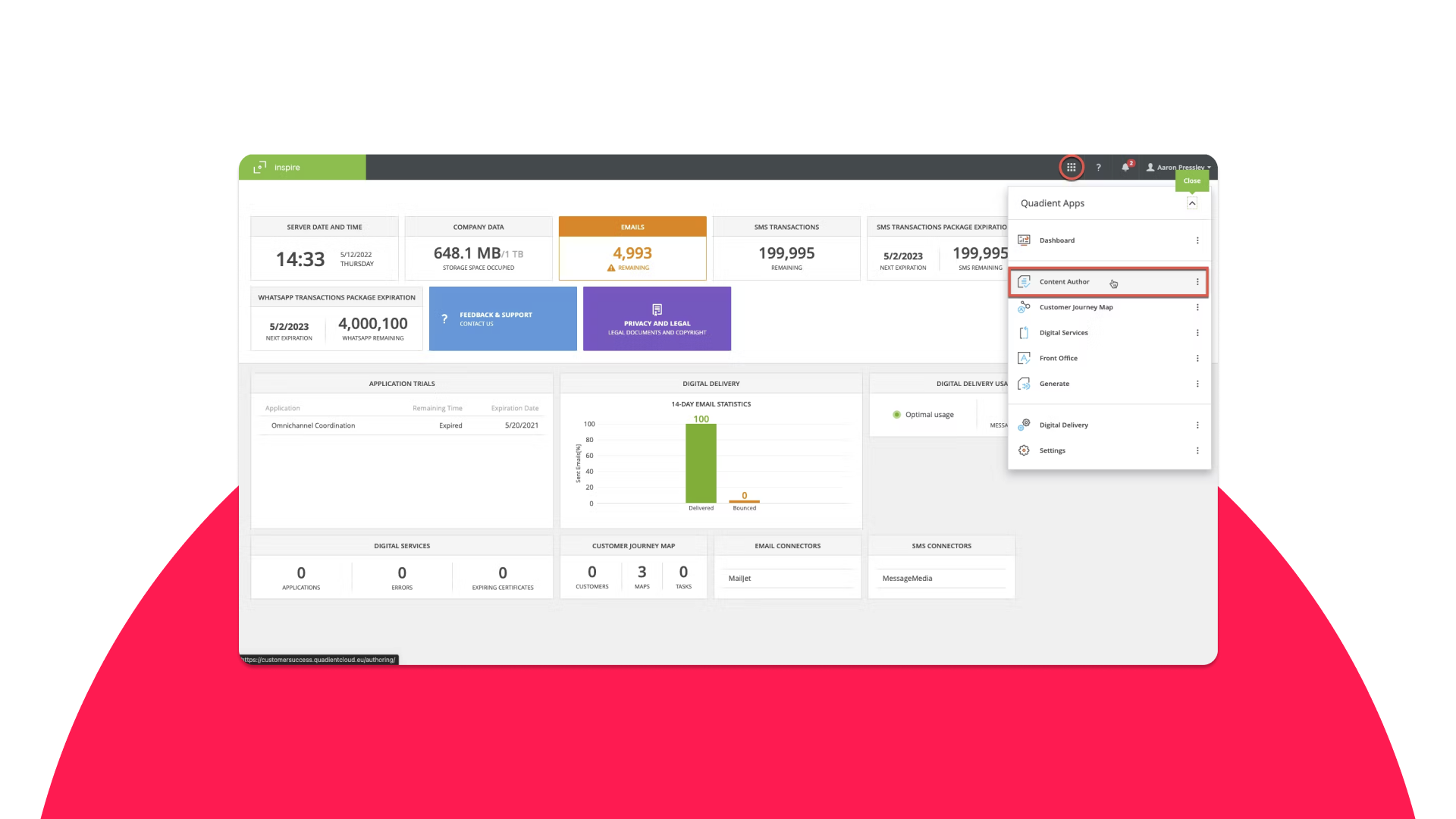
Leading vendors include Quadient Inspire, which blends user‑friendly omnichannel composition with enterprise capability; OpenText Exstream, known for outstanding stability and legacy integrations; cloud‑native Smart Communications (SmartCOMM) and Papyrus Software.
For small and mid-sized businesses, an omnichannel messaging platform like Umnico Inbox can be an optimal choice. It centralizes all customer interactions from WhatsApp, Telegram, social media, and live chat into a single dashboard. With features like chat routing and automation, Umnico empowers teams to streamline support, ensure no message is missed, and manage all client conversations from any device.
Customer communication management implementation: step-by-step
The ССM set-up process includes the following stages.
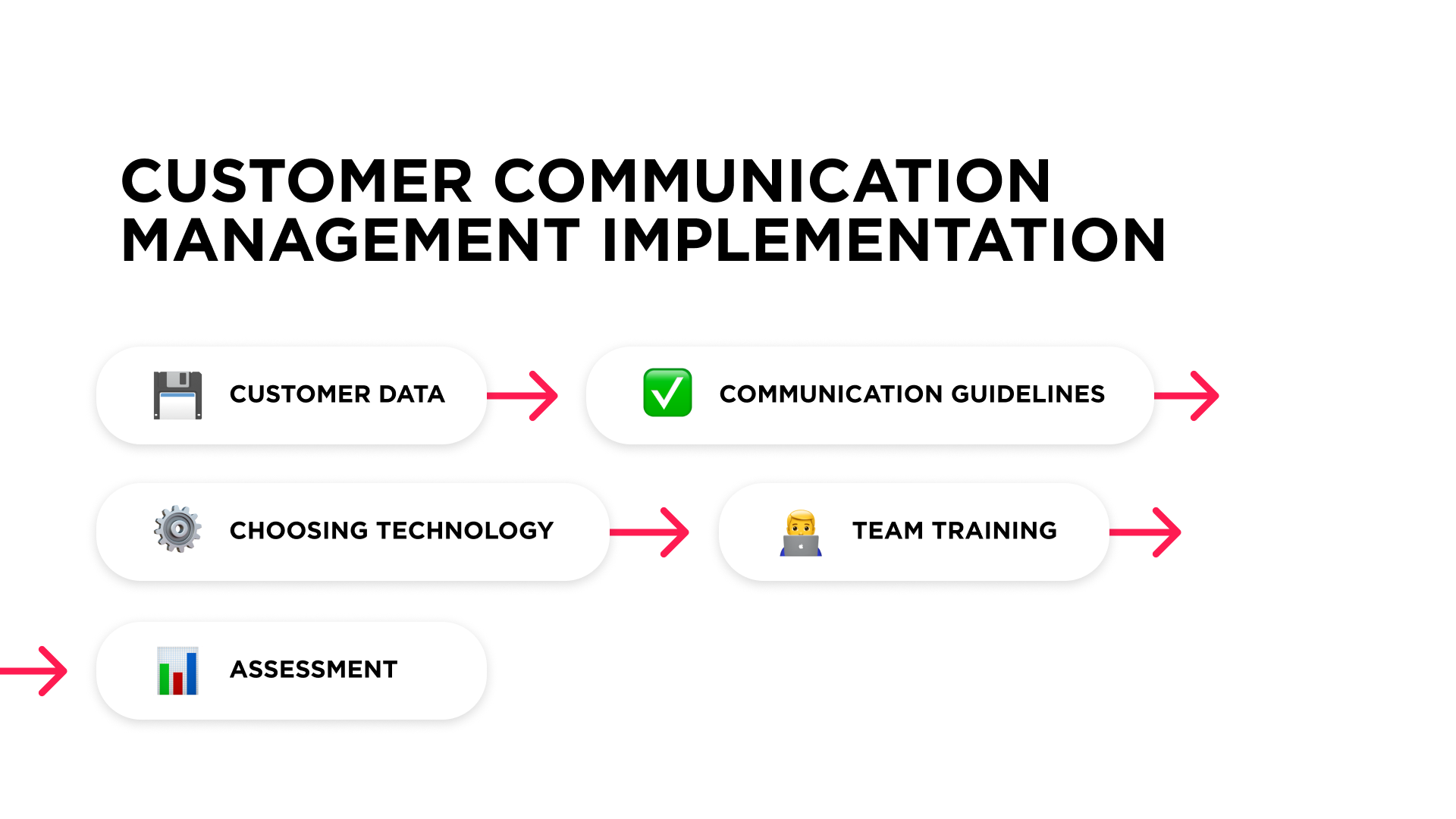
- Build a foundation of data. Determine the pool of trusted sources of customer data, which would be used in the CCM process. This ensures that all data is accurate and reliable.
- Create your communication playbook. Analyze the most popular channels and define key characteristics of them. Ensure that your tone, clarity, and brand voice are maintained across all channels. Use role-based approvals, consent and retention procedures, pre-approved legal content, and thorough audit trails to establish compliance and accessibility right away. Then, to expedite delivery and lower errors, employ automated workflows and modular templates for repeated communications.
- Deploy the right technology. Choose a CCM system that fits your scale and channel mix. The magic happens when you integrate it with your existing stack (CRM, marketing automation, ERP), so that personalization and triggers run on real time data. Pilot a few high-impact customer journeys to prove value, then expand.
- Train team. Provide hands-on training for everyone involved, from content creators to legal and support teams, and foster a culture of collaboration to keep everyone aligned.
- Monitor and improve. Collect customer feedback (CSAT/NPS, thumbs-up/down, chat ratings) and qualitative insights. Track delivery rates, engagement, SLA adherence, and error patterns to see what works and what doesn't.
Emerging trends in customer communication management
The CCM field is constantly evolving, and here are the trends to watch for in 2026.
Hyper-personalization with rich data. CCM systems and data platforms like CRMs and CDPs (Customer Data Platforms) enable companies to create communication based on a customer's entire history, from past purchases to support tickets, setting a new standard for relevance and personalization.
Shift to messaging apps and social media. For decades, CCM was about one-way broadcasts: sending bills, statements, and notices. These times are over. Today's conversations happen in real-time on messaging apps and social media. This means CCM technology is fundamentally adapting to manage two-way, interactive dialogues, making the experience feel less like a formal announcement and more like a helpful chat.
Cloud adoption. Businesses are actively moving to flexible, scalable, cloud-based CCM solutions. The cloud allows them to scale up during peak seasons, integrate new channels in days instead of months, and reduce the heavy burden on internal IT teams. The cloud isn't just an infrastructure choice; it's the foundation that makes hyper-personalization and real-time dialogue possible at scale.
Customer communication management in action: use cases
Let's look at how CCM transforms industries by turning routine interactions into valuable touchpoints.
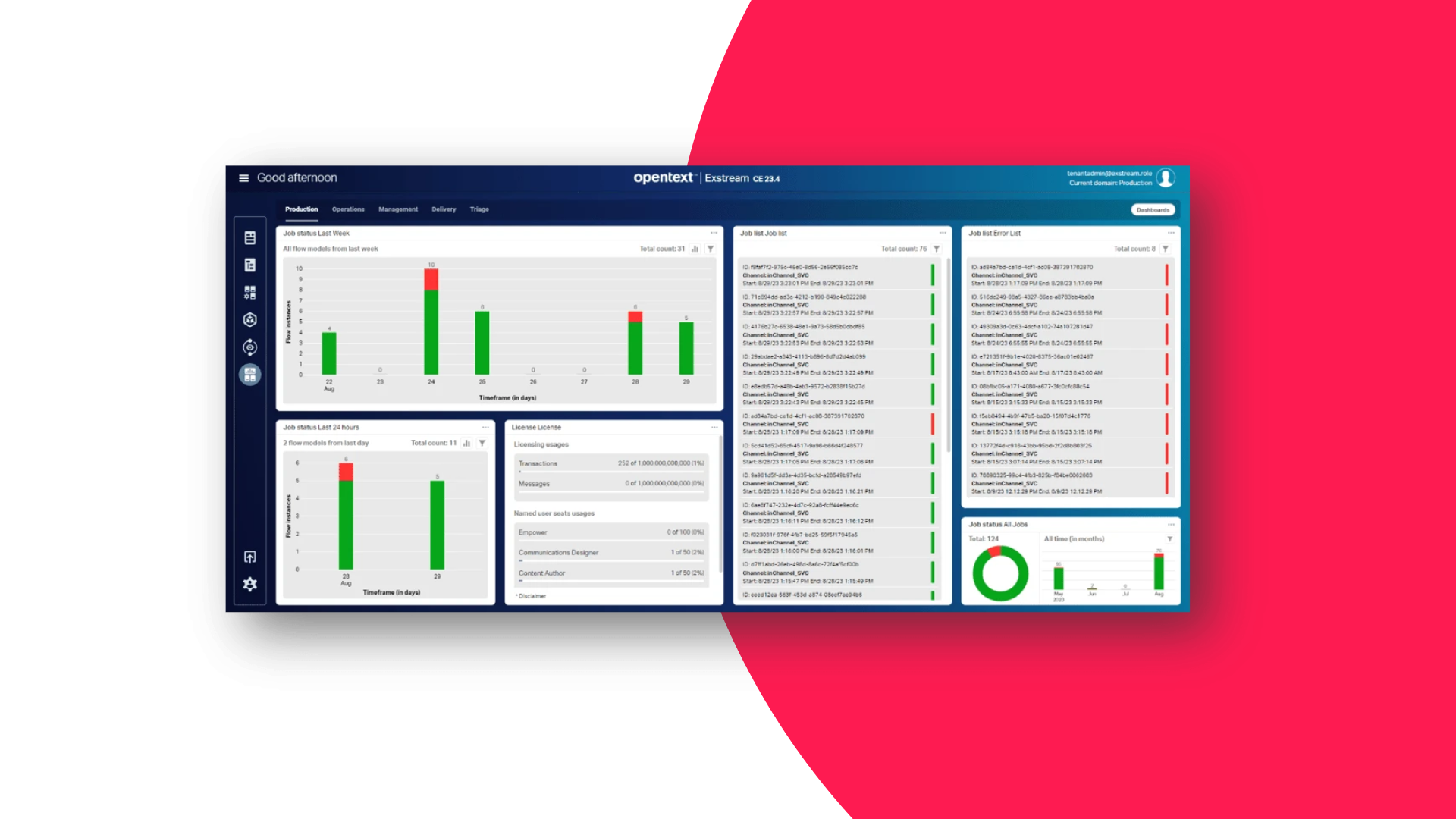
Financial services: secure, compliant statements and efficient onboarding
For financial institutions, where trust is paramount, compliance and data security are non-negotiable. A strong customer communication management strategy is the backbone for this, powering everything from secure customer correspondence management (like automated monthly statements) to real-time fraud alerts. More than just security, it enables personalized customer communication, enriching standard documents with tailored offers that deepen the customer relationship.
Healthcare: personalized patient communications and frictionless billing
In healthcare, clarity and empathy are crucial. A CCM system acts as a secure digital communication platform to deliver a better patient experience. This includes sending timely appointment reminders, delivering sensitive results through protected portals, and generating personalized billing statements—all forms of personalized customer communication that reduce patient anxiety and improve administrative efficiency.
Retail & e-commerce: transactional messages and omnichannel marketing
For retail brands, a seamless omnichannel customer communication strategy is the key to retention. The right CCM technology orchestrates the entire transactional journey, from order confirmations to shipping updates. This effective multi-channel customer communication also powers sophisticated marketing, like triggered abandoned cart emails with unique discounts, turning potential lost sales into loyal customers.
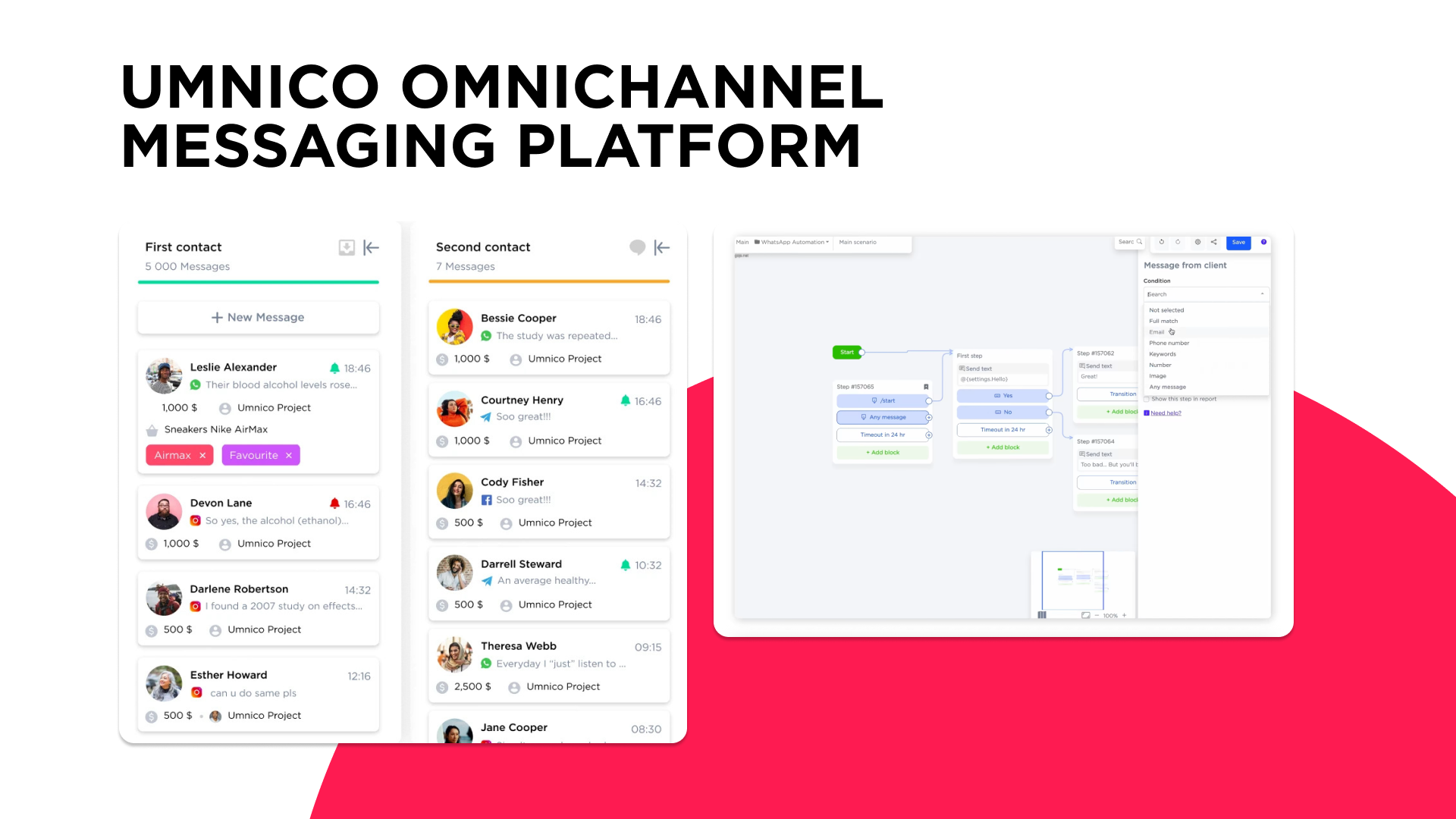
Umnico: providing CCM tools for SMBs
The challenges of multi-channel customer communication are especially clear for modern businesses that operate on social media. Imagine an online store receiving messages from customers on Instagram, Telegram, and WhatsApp. Without a unified system, managers risk missing inquiries and providing slow, fragmented service. By centralizing every dialogue into a single inbox, Umnico enables true omnichannel customer communication via 25+ digital channels. Managers can see the full context of every conversation, streamlining client interaction management and ensuring a consistent brand experience.
Frequently asked questions
What is the difference between CRM and CCM?
CRM (Customer Relationship Management) focuses on tracking customer data, sales, and long-term relationships. CCM (Customer Communication Management) manages customer communications, including emails, statements, messages in social apps, etc. In short, CRM helps you know who your customers are, and CCM ensures you communicate with them effectively.
How does a CCM build trust with a customer?
CCM builds trust by delivering clear, relevant, and timely information on the customer’s preferred channel. When messages are accurate, personalized, and consistent in tone and terminology, customers feel understood and respected, which boosts their loyalty.
What is CCM content?
CCM content refers to the tailored communications businesses deliver to clients through print, email, web, and mobile. Created with templates, business rules, and customer data, CCM content ensures accuracy, efficient distribution, and easy archiving. The key function of it is to boost customer satisfaction, productivity, compliance, and engagement while giving each interaction a more personal touch.
Summing things up
Customer communication management transforms chaotic, disconnected messages into an efficient, centralized, and superior customer journey. A strong CCM strategy is no longer optional. It's the engine for delivering the personalization and consistency of communication for your customer, as well as operational efficiency for your company.
If you are a small or mid-sized business starting in CCM, try out Umnico — a customer communication management solution that is both affordable and functional.
You might be interested in similar topics
Customer Experience Optimization: What You Should Know

Subscribe to Umnico news!
Be the first to get recommendations and up-to-date information
